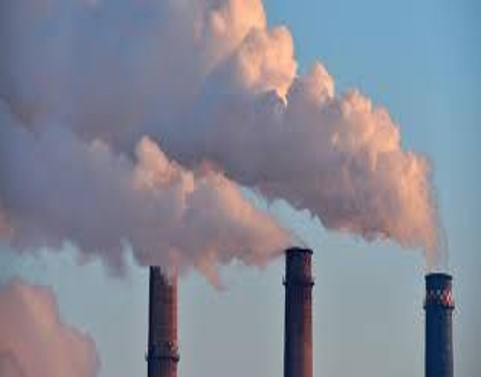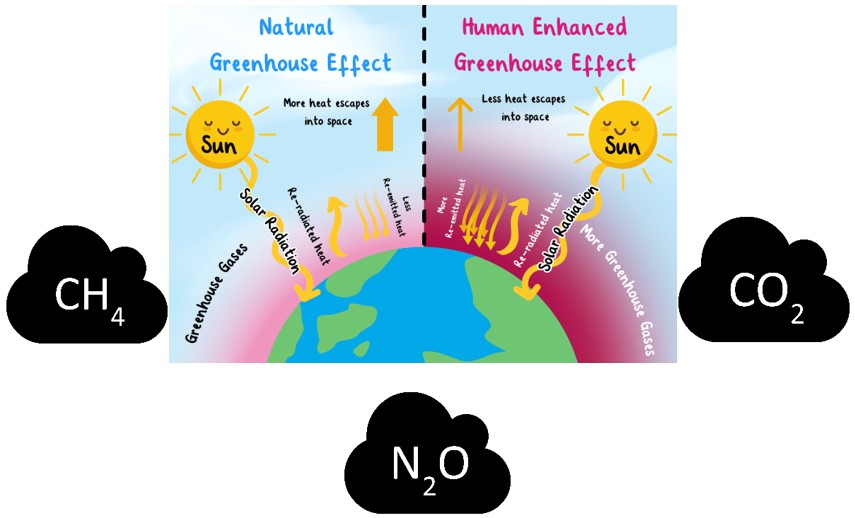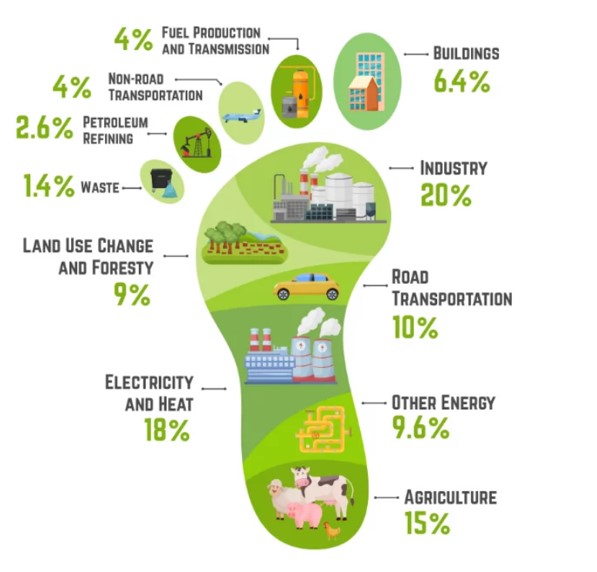- Definition and Types of Energy
- Myths And Misconceptions About Energy
- The Relationship Between Energy and Environment
- Climate Change and Carbon Footprint
- Greenhouse Gas Effect
- The Role of Human-Induced Greenhouse Gases and Energy Consumption
- Energy Efficiency and Sustainability
- Renewable Energy Sources and Future Perspectives
- Play and Learn
- Solar Energy Conversions
- Solar Energy Worldwide
- Solar Energy in Partner Countries
- Positive and Negative Impacts
- Technologies for Harnessing Solar Energy
- Solar thermal energy technologies and applications
- Electricity Generation Methods
- Passive Heating and Cooling of Residences with the Sun
- Concentrator solar power (CSP) systems and electricity generation
- Systems and Applications That Generate Electricity directly from solar rays
- Photovoltaic Cells and Panels
- Domestic PV Systems
- Off-Grid PV Systems
- Hybrid Connected Systems
- Materials Used in PV Cells
- Play and Learn
The Role of Human-Induced Greenhouse Gases and Energy Consumption
One of the main reasons for the human-induced greenhouse effect is that energy production methods and consumption amounts exceed the self-renewal capacity of nature. The increase in energy consumption leads to more intensive use of fossil fuels, increasing the amount of greenhouse gases released into the atmosphere Ref . Greenhouse gases do not prevent the sun's rays from entering the earth, but they absorb some of the long-wave rays reflected from the earth and reflect them back to the earth. This causes the atmosphere to warm. The main gases of the greenhouse effect are:

- Carbon Dioxide (CO₂): Burning of fossil fuels, industrial activities and deforestation.
- Methane (CH₄): Agricultural activities, animal husbandry and waste management.
- Nitrogen Oxides (N₂O): Fertilizer use and various industrial processes.
- Fluorinated Gases: Industrial processes and cooling systems.

The proportion of greenhouse gases among the gases that make up the atmosphere is quite low and is below 0.1%. However, even these low-level changes have major effects on the world's climate system. The average temperature of the Earth's surface is approximately 15°C, and this temperature is maintained by greenhouse gases. If there were no greenhouse gases in the atmosphere, the average temperature of the Earth's surface would drop to -18°C Ref .
However, the increase in the proportion of greenhouse gases in the atmosphere causes average temperatures to rise, in other words, global warming. This situation leads to cascading effects on the climate system. As a natural result of global warming, glaciers in high mountains and the poles are rapidly melting, which leads to a rise in sea level. Due to increasing temperatures, many living species are losing their habitats and the ecosystem balance is disrupted. As the seas warm, carbon dioxide dissolved in water is released and mixed into the atmosphere. This further increases the greenhouse effect, creating a vicious cycle Ref . Climate change caused by global warming can create very difficult living conditions for humanity and other living things. The general view of climate experts is that these changes can lead to major environmental disasters Ref . In particular, problems that will arise in critical areas such as agriculture, water resources and energy supply threaten a sustainable life. Controlling the increase in greenhouse gases, encouraging the use of renewable energy sources and reducing energy consumption are key to limiting the effects of global warming.
Carbon footprint refers to the total amount of carbon dioxide (CO2) and other greenhouse gases released into the atmosphere as a result of the activities of a person, community or organization. This concept includes emissions from energy consumption, transportation habits, consumed products and production processes. For example, when a person travel using their vehicle, travels by plane or uses electrical devices, they directly release carbon. In addition, the production of food and other products we consume can also increase our carbon footprint, because production processes usually require energy and greenhouse gases are released in these processes. In order to reduce our carbon footprint, minimize negative impacts on the environment and slow down global warming, it is of great importance to save energy, turn to renewable energy sources and develop more sustainable consumption habits

Renewable energy sources are one of the most effective solutions to reduce our carbon footprint. Renewable energies obtained from natural sources such as sun, wind, water and geothermal have much lower carbon emissions compared to fossil fuels. When these sources are used, electricity production and other energy needs are met in a more environmentally friendly way because the release of greenhouse gases into the atmosphere is prevented. Renewable energy sources offer a more sustainable energy option in the long term because they are inexhaustible and do not harm the environment. In addition, renewable energy systems allow energy production on a local scale, thus reducing energy losses during transportation and transmission. Switching to renewable energy not only reduces the carbon footprint, but also minimizes environmental impacts and secures future energy needs. Therefore, the use of renewable energy sources is one of the most important steps to be taken in the fight against global warming and for a sustainable future.